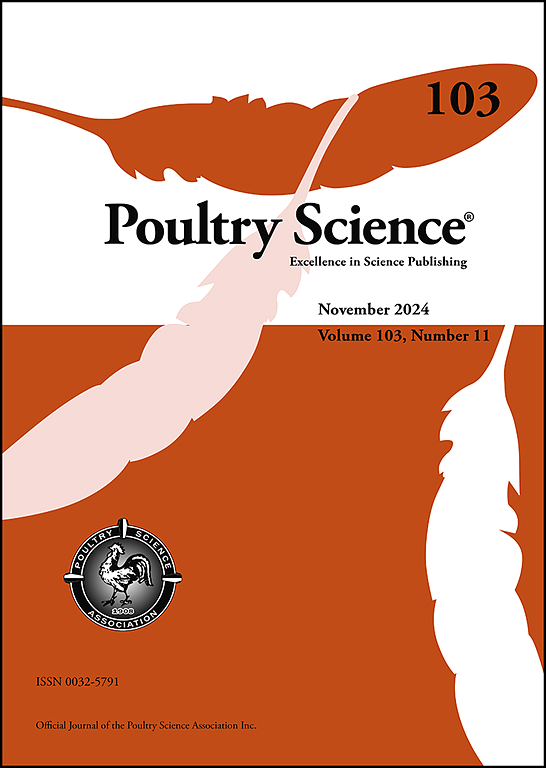Residue of allocryptopine and protopine in tissues and eggs of laying hens using ultra-high performance liquid chromatography–tandem mass spectrometry
IF 3.8
1区 农林科学
Q1 AGRICULTURE, DAIRY & ANIMAL SCIENCE
引用次数: 0
Abstract
The residues of allocryptopine (ALL) and protopine (PRO) in the eggs and tissues of laying hens from the veterinary drug Bopp Total Alkali Powder® were evaluated. UPLC-MS/MS technology was used to accurately determine these components. The study found that at a dose of 400 mg/kg, PRO in eggs reached a peak of 2.8 µg/kg on the seventh day of administration and was undetectable five days after stopping the medication. ALL was not detected throughout the study. At a dose of 2000 mg/kg, one day after stopping the medication, the residues of PRO and ALL reached 16.72 µg/kg and 8.61 µg/kg, respectively. Seven days after stopping the medication, PRO was undetectable, but there was still a residue of ALL. Tissue samples showed that two hours after stopping the medication, the concentrations of both components significantly increased in all tissues but rapidly declined within 24 h. Seven days after stopping the medication, no residues were detected in all tissues. The study suggests that the risk of residue is low when using Bopp Total Alkali Powder® at a dose of 400 mg/kg. However, using a dose of 2000 mg/kg may increase the risk of residue, so it is recommended to stop the medication for at least seven days to ensure food safety.
求助全文
约1分钟内获得全文
求助全文
来源期刊

Poultry Science
农林科学-奶制品与动物科学
CiteScore
7.60
自引率
15.90%
发文量
0
审稿时长
94 days
期刊介绍:
First self-published in 1921, Poultry Science is an internationally renowned monthly journal, known as the authoritative source for a broad range of poultry information and high-caliber research. The journal plays a pivotal role in the dissemination of preeminent poultry-related knowledge across all disciplines. As of January 2020, Poultry Science will become an Open Access journal with no subscription charges, meaning authors who publish here can make their research immediately, permanently, and freely accessible worldwide while retaining copyright to their work. Papers submitted for publication after October 1, 2019 will be published as Open Access papers.
An international journal, Poultry Science publishes original papers, research notes, symposium papers, and reviews of basic science as applied to poultry. This authoritative source of poultry information is consistently ranked by ISI Impact Factor as one of the top 10 agriculture, dairy and animal science journals to deliver high-caliber research. Currently it is the highest-ranked (by Impact Factor and Eigenfactor) journal dedicated to publishing poultry research. Subject areas include breeding, genetics, education, production, management, environment, health, behavior, welfare, immunology, molecular biology, metabolism, nutrition, physiology, reproduction, processing, and products.
 求助内容:
求助内容: 应助结果提醒方式:
应助结果提醒方式:


